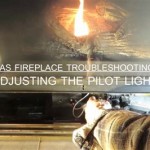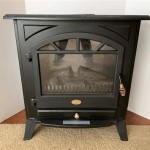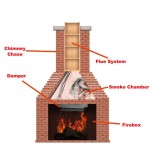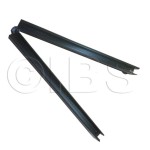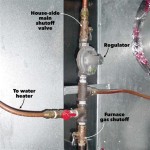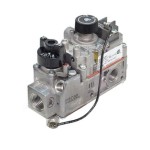Gas Fireplace Embers: A Guide to Replacement and Optimization
Gas fireplaces provide supplemental heat and aesthetic appeal to homes. A key component contributing to the realistic flame appearance is the ember bed. Over time, these embers deteriorate, affecting the overall performance and visual appeal of the fireplace. Understanding the types of embers, the reasons for replacement, and the appropriate replacement procedures is crucial for maintaining a safe and efficient gas fireplace.
Gas fireplace embers are manufactured to withstand high temperatures and to distribute the gas flow evenly for a realistic flame effect. They are typically made from ceramic fiber materials that are designed to glow brightly when heated. These materials are porous and can absorb small amounts of gas, contributing to the visual depth and randomness of the flame pattern. The embers are not just for decoration; they play a functional role in the combustion process.
The ember bed is strategically placed to optimize gas combustion and create a natural-looking flame display. The gas jets distribute fuel beneath the ember bed. As the gas rises through the embers, it mixes with air and ignites, creating the flames. The embers then heat up and glow, emulating the appearance of burning wood or coal. Proper ember placement is vital for even heating and a balanced flame appearance.
Reasons for Gas Fireplace Ember Replacement
Several factors necessitate gas fireplace ember replacement. One of the most common reasons is physical deterioration. Over prolonged periods of use, the high heat can cause the embers to crumble, crack, or disintegrate. This degradation diminishes their ability to effectively distribute gas and maintain a realistic flame. The breakdown also reduces their ability to radiate heat effectively, potentially impacting the overall heating capacity of the fireplace.
Another reason for replacement is contamination. Dust, soot, and other debris can accumulate on the embers, impeding the gas flow and reducing the ember's ability to glow. This contamination not only affects the appearance of the fireplace but can also contribute to incomplete combustion, potentially leading to the release of harmful gases, such as carbon monoxide. Regular cleaning can help minimize contamination, but eventually, replacement becomes necessary.
Improper installation or the use of incorrect ember types can also necessitate replacement. Using embers not specifically designed for gas fireplaces can be unsafe, as they may not be able to withstand the high temperatures and could release harmful chemicals when heated. Incorrect placement of the embers can also disrupt the gas flow and lead to uneven flames or inefficient combustion. Always refer to the fireplace manufacturer's specifications for ember type and placement instructions.
A change in flame appearance is another indication that ember replacement may be needed. If the flames are consistently weak, uneven, or yellow, it could indicate that the embers are no longer effectively distributing the gas. A healthy gas fireplace will typically have flames that are primarily blue with yellow tips. If the flames are mostly yellow, it suggests incomplete combustion, which can be caused by deteriorated or contaminated embers.
Types of Gas Fireplace Embers
Gas fireplace embers come in various forms to suit different fireplace designs and aesthetic preferences. The most common types are ceramic wool embers, ceramic fiber logs, and vermiculite granules.
Ceramic wool embers are typically small, lightweight pieces of ceramic fiber material. They are designed to be scattered across the burner to create a glowing bed of embers. Ceramic wool embers are relatively inexpensive and easy to install. Their lightweight nature, however, can also make them susceptible to shifting or being blown around by the gas flow, which can affect the flame appearance.
Ceramic fiber logs are larger, more substantial pieces that are shaped to resemble natural wood logs. These logs are often used in conjunction with smaller ember pieces to create a more realistic-looking fire. Ceramic fiber logs are more durable than ceramic wool embers and provide a longer lifespan. They can also contribute to a more radiant heat output due to their increased mass.
Vermiculite granules are a mineral-based material that is used as a filler in gas fireplaces. While not technically embers, they can contribute to the overall visual effect and help to distribute the gas evenly. Vermiculite is typically used beneath the embers to create a foundation and to help regulate the gas flow. It is also fire-resistant and helps to insulate the fireplace.
The selection of the appropriate ember type depends on the specific fireplace model and the desired aesthetic. Always consult the manufacturer's instructions to ensure compatibility and proper installation.
Gas Fireplace Ember Replacement Procedure
Replacing gas fireplace embers should be approached with caution to ensure safety and proper operation. Before starting, ensure the gas supply to the fireplace is completely shut off. Allow the fireplace to cool completely to prevent burns. It is also recommended to wear gloves and a dust mask to protect against any potential irritants from the old embers.
Begin by carefully removing the existing embers. Dispose of the old embers according to local regulations. Avoid simply discarding them in regular household trash, as they may contain residual gas or contaminants. Some municipalities offer specific disposal programs for fireplace components.
Clean the area around the burner and the firebox to remove any accumulated dust, soot, or debris. A vacuum cleaner with a soft brush attachment can be used for this purpose. Be careful not to damage the burner or any other components of the fireplace during the cleaning process.
Refer to the manufacturer's instructions for the correct placement of the new embers. The placement is critical for proper gas flow and a realistic flame appearance. Generally, the embers should be distributed evenly across the burner, ensuring that the gas ports are not blocked. For ceramic fiber logs, position them according to the manufacturer's guidelines to create the desired flame pattern.
After placing the embers, carefully inspect the installation to ensure that all components are properly aligned and secure. Turn the gas supply back on and test the fireplace to verify proper operation. Observe the flame pattern to ensure it is even, blue with yellow tips, and realistic-looking. If the flames are uneven or yellow, adjust the ember placement as needed.
It's recommended to consult with a qualified gas fireplace technician for complex replacements or if unsure about any aspect of the process. A professional can ensure the correct type of embers are used and that the installation is performed safely and effectively.
Regular maintenance, including periodic cleaning and inspection of the embers, can extend their lifespan and maintain the optimal performance of the gas fireplace. This proactive approach helps prevent premature degradation and ensures a safe and enjoyable fireplace experience.
Beyond the aesthetic benefits, properly functioning embers also contribute to the overall efficiency of the gas fireplace. By promoting complete combustion, they help minimize the release of harmful emissions and maximize the heat output. This can translate to lower energy bills and a reduced environmental impact.
In summary, gas fireplace ember replacement is a necessary maintenance task that impacts both the appearance and functionality of the fireplace. Understanding the different types of embers, the reasons for replacement, and the proper replacement procedures is crucial for ensuring a safe, efficient, and aesthetically pleasing gas fireplace experience.

Gas Fireplace Embers Friendly Fires

Glowing Embers For Fireplace Mother Daughter Projects

Glowing Embers For Fireplace Mother Daughter Projects

Glowing Embers In A Fireplace Magic Touch Mechanical

Glowing Embers For Fireplace Mother Daughter Projects

Pleasant Hearth Vented Or Vent Free Gas Log Embers In The Fireplace Accessories Department At Com

Add Glowing Embers To Your Gas Fireplace

Do You Need Glowing Embers For Your Fireplace

Enviro The Ex35 Gas Fireplace Insert Toronto Home Comfort

New Napoleon Elevation Ex Series Gas Fireplace Featuring Modulating Electric Ember Bed Russo S
Related Posts


